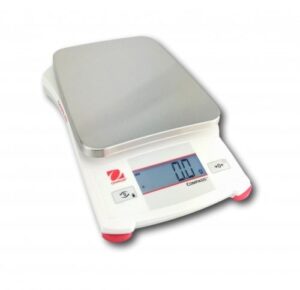The accuracy of a www.instrumentchoice.com.au/ digital scale is highly important for accurate weight measurement. When buying a digital scale, some factors include load cell sensor, syncing with a fitness tracker, and cost. Before buying a digital scale, learn how to maintain it properly and prevent tampering. Here are some tips to make your purchase a success. A high-quality scale will last you for years, and you can rest assured that you’ll be satisfied with it.
Load cell sensor
 If you want to calibrate the Load cell sensor on your digital scale, you first need to know how to properly wire it. A load cell has two terminals: a red center tap and a white and black outer terminal. The measurement should be between 1000 and 2000 ohms. Once you have the right load cell wired up, the next step is calibrating the scale and testing it to ensure it is working properly.
If you want to calibrate the Load cell sensor on your digital scale, you first need to know how to properly wire it. A load cell has two terminals: a red center tap and a white and black outer terminal. The measurement should be between 1000 and 2000 ohms. Once you have the right load cell wired up, the next step is calibrating the scale and testing it to ensure it is working properly.
Firstly, you must understand the difference between accuracy and resolution. A higher number of digits does not necessarily mean higher accuracy. In a legal-for-trade scale, the load cell sensors have a fixed resolution to avoid the need for interpretation of results. Accuracy is also important because gravity changes from one location to another. Moreover, all technical instruments can develop errors. Hence, calibration is important for ensuring the accuracy of your digital scale.
The Load cell sensor is a critical component of any www.instrumentchoice.com.au/ digital digital scale. It detects the gravitational force applied to a weighing object. It is essential in electronic weighing machines, as it converts the force into an electrical signal. Typically, load cells have four strain gauges connected in a Wheatstone bridge. A strain gauge sensor is the most widely used in the weighing industry and provides an accuracy of 0.25% over a wide range.
Syncing with a smartphone or fitness tracker
You may encounter connection problems with your Fitbit, so you may not see your fitness statistics. The cause of these issues could be Bluetooth or too many devices using the connection. If you don’t see your stats on your phone, try restarting your Fitbit device. In rare cases, you may need to restore the data integrity by performing a factory reset. However, if the sync process doesn’t begin, you can always force quit the app and reinstall it.
You can also use the MoveSpring app to sync with your Fitbit tracker if you have an iPhone. MoveSpring has API access to the Fitbit tracker, which means it will be notified when new activity data is available. The syncing will typically occur one to 20 times a day. Once you’ve finished your exercise, you can open the MoveSpring app and sync your Fitbit.
You can also sync its data without a smartphone if you have a Fitbit. This is possible because Fitbit uses software that allows you to sync your data without needing a smartphone. Many fitness trackers can also sync with smartphones. To avoid a hassle, be sure to follow the steps mentioned below. If you don’t have a smartphone, you can try using your phone’s Bluetooth connection instead.
Cost of a digital scale
While purchasing a digital scale for as little as $100, many pitfalls can skyrocket the cost. Most of these scales are expensive, feature poor user interfaces, and have features beyond what most people need. While many “smart” models have Bluetooth connectivity, the reality is that most of these devices will never be used outside the home. If you are interested in using them for medical purposes, you should consider purchasing a traditional model.
A www.instrumentchoice.com.au/ digital scale is more accurate than an analog one, but you should consider a few things before buying. First, keep in mind the environment in which you’ll use your scale. Fluorescent light, humidity, and even fluorescent light can interfere with a digital scale’s performance. Analog scales are best for certain uses, such as shipping heavy packages. However, an analog scale may be the best choice if you’re planning to sell small packets of food.
Second, make sure the scale you buy is sturdy and well-built. It should be easy to clean and should be resistant to moisture. It should also have a large digital display that makes reading the measurements easier. If your kitchen is small, a backlit display may help you see what you’re doing, such as when preparing your meals. Lastly, consider the return policy when buying a scale. If it’s not working correctly, it should be replaced.